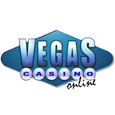Lesson 10 – The Proper Mental Attitude
Last Updated: February 18, 2020I always stress the idea of ‘expectation’ as it applies to casino gaming because understanding the concept will help you stop gambling and hopefully turn you into an investor at the tables. By definition, an investor expects to make a profit so you cannot be an investor if you play at games where there is a negative expectation. If you bet $10 on the Pass line at craps, you’ll either win $10 or lose $10, but your ‘expectation’ is to lose 14 cents on every hand. That’s because the house has a built-in edge of 1.4% on that bet and if you play it frequently, your average loss will work out to be 14 cents per decision. In the short term you might win a lot of money, but play it long enough and the house edge will eventually have its effect. Since the average craps table produces about 60 decisions an hour, the cost per hour of betting $10 on the pass line will work out to be — in the long run — about 60 X 14 cents = $8.40.
Now let’s look at this concept from the point of view of a positive expectation situation like card counting at Blackjack. If your average bet is $12 and the average advantage you have over the house is 1.25%, your expectation is to win $12 X .0125 = $.15 per hand. Yes, that’s 15 cents per hand. At a rate of 60 hands an hour, you can expect to make — in the long run — about 60 X 15 cents = $9.00 an hour. But, if you can increase the number of hands you play per hour to, say, 80 hands, you’ve raised your expectation to 80 X 15 cents = $12.00 an hour. The only other way to make more money is to either raise the size of your average bet or increase your edge over the casino. The bet size is just a function of your bankroll (and your ability to continue ‘fooling’ the casino into believing you are just another gambler and not a card counter) and the advantage is mostly a function of the casino’s rules for their Blackjack game. I will address both these issues in future lessons, so for now let’s focus on increasing the number of hands you play in an hour.
More Hands Mean More Money
If you are the only player at a six-deck game, you can play at a rate of about 200 hands an hour. With all else remaining equal, that will raise your expectation to 200 X 15 cents = $30 an hour — a very healthy increase. The problem here is that I want you to get up and walk away whenever the true count drops below M1, so 200 hands an hour is possible only if you get one of those shoes where the count stays positive AND if you are fast enough to keep the count while your playing at this rate. Moving when the deck goes bad is a must, since it’s cheaper to not play at all rather than play at a game where the house has an edge over you.
But 200 hands an hour is a worthy goal, so continue practicing with your single-deck countdown in an effort to build your speed to a point where you can go through a deck in under 20 seconds. When you can do that and compute the true count and play perfect basic strategy, you should play one-on-one whenever possible. That may mean that you’ll have to go to the casino at 2 AM on a Monday, but it will be worth it. Just remember that increasing your rate of play will increase your hourly standard deviation, so don’t be surprised if you lose $400 or more in an hour’s play; your risk hasn’t increased but you have — in effect — ‘compressed’ your time factor. Dealers often tell me that a player “can’t win” one-on-one, but they’re wrong. Their misconception in this regard comes from the fact that because more hands are being played, the swings are bigger and dealers usually remember the big losers and forget the big winners. As an investor, it is in your best interest to play as many hands an hour as possible, since your expectation is to win 15 cents a hand.
THE GOAL OF THE PROFESSIONAL PLAYER IS TO PUT IN AS MUCH QUALITY PLAYING TIME AS POSSIBLE; WIN OR LOSS AMOUNTS ARE SECONDARY. BY PLAYING AND BETTING CORRECTLY, THE $$$ WILL COME WITH TIME.
A Winning Attitude
As I’ve said before, the wins at Blackjack come in ‘chunks’, so you shouldn’t be concerned when you have a losing session, nor should you feel invincible when you win. A proper mental attitude eliminates the highs and lows of the game (thus making it very boring — at least in my opinion) but it enables you to play a solid, unemotional game. When I have a losing session (on average, 35% of the time), I just go away knowing that the casino will take good care of the money and I’ll eventually come back and get it. 600 hands of play means I’ve ‘earned’ 600 times my expectation per hand so I just need to keep going to work and my paycheck will eventually reflect my earnings. To put it simply, if you are playing a winning game, it isn’t a matter of ‘if’ you will win, merely a matter of ‘when’.
So let the ice-water begin to flow in your veins — as one author put it, “steely blue eyes will do.” Emotion has no place in card-counting; accuracy and patience are the only requirements for getting the $$$.
Homework
Get an old deck of cards and a marker pen. For those of you playing at 6-deck games, write the number “1/2” on the back of one card, “1” on the next card, “1 1/2” on the third card and continue up to 5 by increments of one-half. Now , number the backs of 20 more cards individually from 1 to 20. Shuffle both piles (separately) face up so you can’t see the numbers and turn over the top card from the first pile. This will represent the number of decks in the discard tray. For example, if it’s the “2 1/2” card, it represents 2 1/2 decks in the discard tray, so that must mean there are 3 1/2 decks left in the shoe. Now begin turning over the cards from the second pile. These represent the running count and we want to practice computing the true count, so if the first card is “8”, the true count is 8 divided by 3 1/2 = 2 (remember, we round down to be conservative). Keep going through the running count cards while the ‘decks’ card remains the same. When you’ve gone through all the running count cards, change the ‘decks’ card and do it again.
This exercise will help speed your ability to compute the true count accurately. Those of you who will be playing single deck just need to make a card for 1/4, 1/2, and 3/4 decks and running-count cards from 1 to 10, but you will practice the same way.
As you do this exercise, concentrate on accuracy and remember to be conservative in computing the true count.




Hi ken !!thanks for the advise.after only one week of hard training i can keep follow easy the rc and many times to estimate the correct amount of cards that are in the tray so i am going to stick to the hi-lo.i see now how logical was your words that in now time the maximum target is just to make the correct betting for each hand based on the tc.after when i will be ready i will start thinking of deviations in b.s based on the index numbers.thanks for the response
I still try to count six deck game and i feel my brain gets tosted !!just the running count not the true count cause i cant still estimate the decks in the tray !!its very odvious that i have to make my brain like a comp with out mistakes same time to play like very chill and cool guy and also have the bankroll and the diciplane to make money !!in other words … no pain no gain… card counting is an art and skill.
Consider taking a look at KO, in the book Knock-Out Blackjack. It doesn’t require a conversion to true count, and still compares favorably to Hi-Lo.
Great forum.very helpfull for us rookies !!ken an expert counter as u how many hours can he stand playing continiusly with out making mistake or have mental issues?
The issue quickly becomes not how many hours you can play accurately, but instead how many hours you SHOULD play. If you have enough places to spread your play around, I strongly suggest hit and run short sessions of just under an hour. I realize that’s impractical for most players, but it really helps on your ability to continue to be allowed to play. As for the general idea of your question, once you really get comfortable counting, you could play for long stretches with minimal effort.
Greatly appreciate your website. Many thanks. Hit en once more.
If mgm goes to $10.00 parking, and the price of gas stays where it’s at (below $3.00) and they keep pushing this 6/5 business, and union pressure in a RTW state, these high priced execs better start checking how far away the competion is.lol Not to mention a 20% rake and increase in food and room rates. Should help out the taxi business, but the indians and out of staters might get tired of that long drive for a 20$ hamburger at micky dees.
First MLife stopped table game express comp earning, and now they plan to charge for parking. Vegas is becoming a far different place. Once Vegas casinos’ non-gaming revenue eclipsed gaming revenue, we could have seen this trend coming.
Hello there Ken!
Very, very useful website, and very, very useful replies from you. Thank you!
I have one question: Should i only join the tables that are starting the new shoe (no cards dealt)? So, I’m supposed to walk around and watch when the all cards are dealt, and then sit and play?
And, if I’m playing a 6-deck shoe, immidiately when the true count goes minus 1, i am supposed to walk away? That will happen pretty often right? You said before that it’s happening very often in a double deck game, but i assume that it’s happening in 6-deck as well?
I will probably have a bunch of questions for you in coming weeks, so be prepared 🙂 🙂
Thank you again, really!
Yes, if you leave every 6-deck shoe at -1, you’ll be walking a lot. I personally never left at that minor a negative count. But if you can do it, it does really help the expected results. In 2-deck games, you can afford to play through a lot more negative counts and still have very good overall results. That is why the majority of my play has been at 2-deck games. They are simply a lot easier to beat.
As for sitting down at a shoe already in progress, there’s no problem with it, although you are less likely to reach a positive situation. It’s like playing a game with poor penetration until the first shuffle. Just treat any discards when you begin as unseen decks, just like the cards still in the shoe. For that reason, it’s simpler and better to just come in immediately after a shuffle instead. But you don’t have to wait if you don’t want.
Quick question about getting up from the table when the true count drops to m1 or lower. Let’s say that after just 1 or 2 hands on a double deck table the count drops to m1, do I get up and leave? Or stick it out for a few more hands? What is the time limit on this?
Leaving at minor negative counts in double deck quickly becomes impractical because it happens so frequently and there are typically only a few double deck tables that you can switch to. When playing double deck I generally play through the negative counts, except for taking bathroom breaks and phone call breaks during the worst counts.
odds for 6 deck bj double bonus odds i get 9 – 1 on 3 card poker hands the second bonus bets only payout for straight flushes 180 – 1
3 of a kind 90 – 1
and 3 suited of a kind for 270 – 1
how bad are these odds what are the true odds
This is offered at Hippodrome as “Top 3”: http://www.hippodromecasino.com/hippodrome-casino/blackjack/
(Although I think it’s on 8 decks there.)
The 8-deck house edge on this bet is around 9%, and it would be even worse on 6 decks.
Hi,i have been playing in Macau and according to some website the house edge there is only about -0.09%(with proper basic stratergy),1/6 penertration.I was wondering if the game is beatable with large enough bet spread since the house edge is so low…thx!
Almost any game is beatable with a large enough spread. Is it beatable in practice? You would really need to sim this and see what kind of spread it would take. I assume by “1/6”, you mean they are dealing only one deck of out six before shuffling (or before putting the discards into a continuous shuffle machine). That’s a tough game, and even if it is beatable with a huge spread, there should be better opportunities for you elsewhere.
I was thinking that “-0.09%,even a running count of 1 at the beginning,which is a true count of 1/6 can easily turn the table, since a true count of 1 will give you an advantage of at least 0.8%(according to blackjackincolor) ,that means 1/6 can give you an edge of 0.13%” Is that mathematically right?
I was surprised by the BlackjackInColor information saying that true +1 adds 0.79%, but after some thought it makes sense. In most games, that’s no big deal since the starting house edge is usually much closer to half a percent.
However, you can’t assume that a true count of 1/6 will deliver 1/6 of that 0.79%, because as that same chart shows, the effect is non-linear.
The only reliable way to know is to sim it. (I recommend CVData, although I no longer keep it in inventory at my site. Here’s a link to it at the publisher’s site.)
If your starting house edge of only 0.09% is accurate, it won’t take much to tip the scales.
I can’t imagine the game is going to yield much of an hourly return, even with a pretty large bet spread.
How about Vegas? Are most of the casino using CSM now? Is it possible to count cards there?
Sure, Vegas still has lots of non-CSM games, as do most areas of the US.
thanks a lot man! you have been quite helpful. One last question: Is it possible that the casino, to increase their profit rate, put just a bit more small cards in the shoe so as to increase their edge?
Possible? Yes, but very unlikely. Fortunately, most games still spread the decks and examine them when they open the table. Get there and watch yourself to make sure the cards are as they should be. If they don’t spread the cards when opening new decks, you have a right to be suspicious.